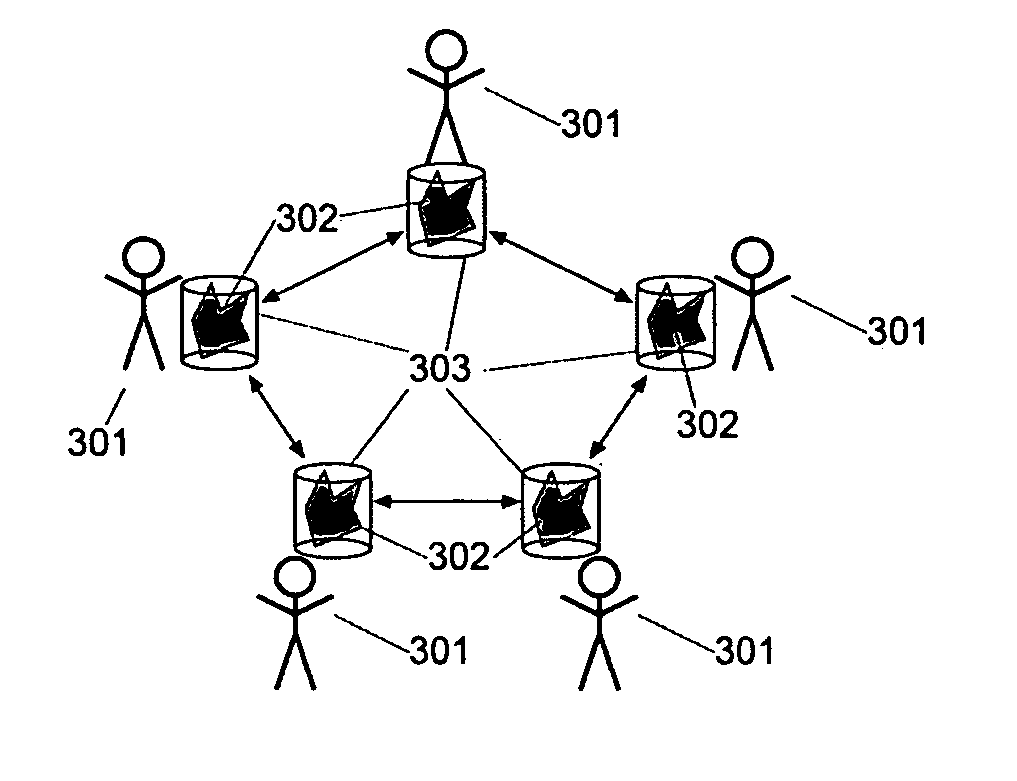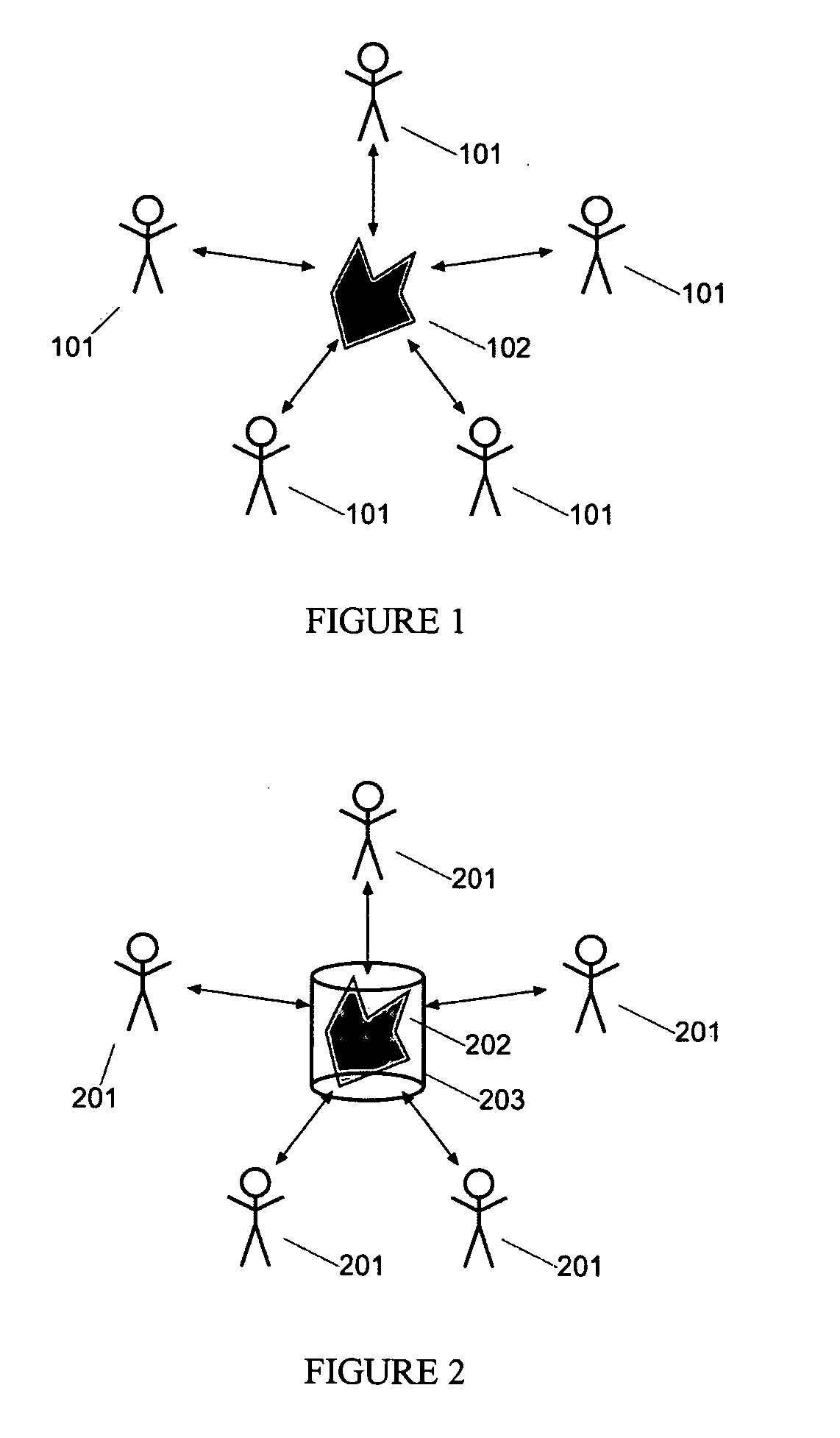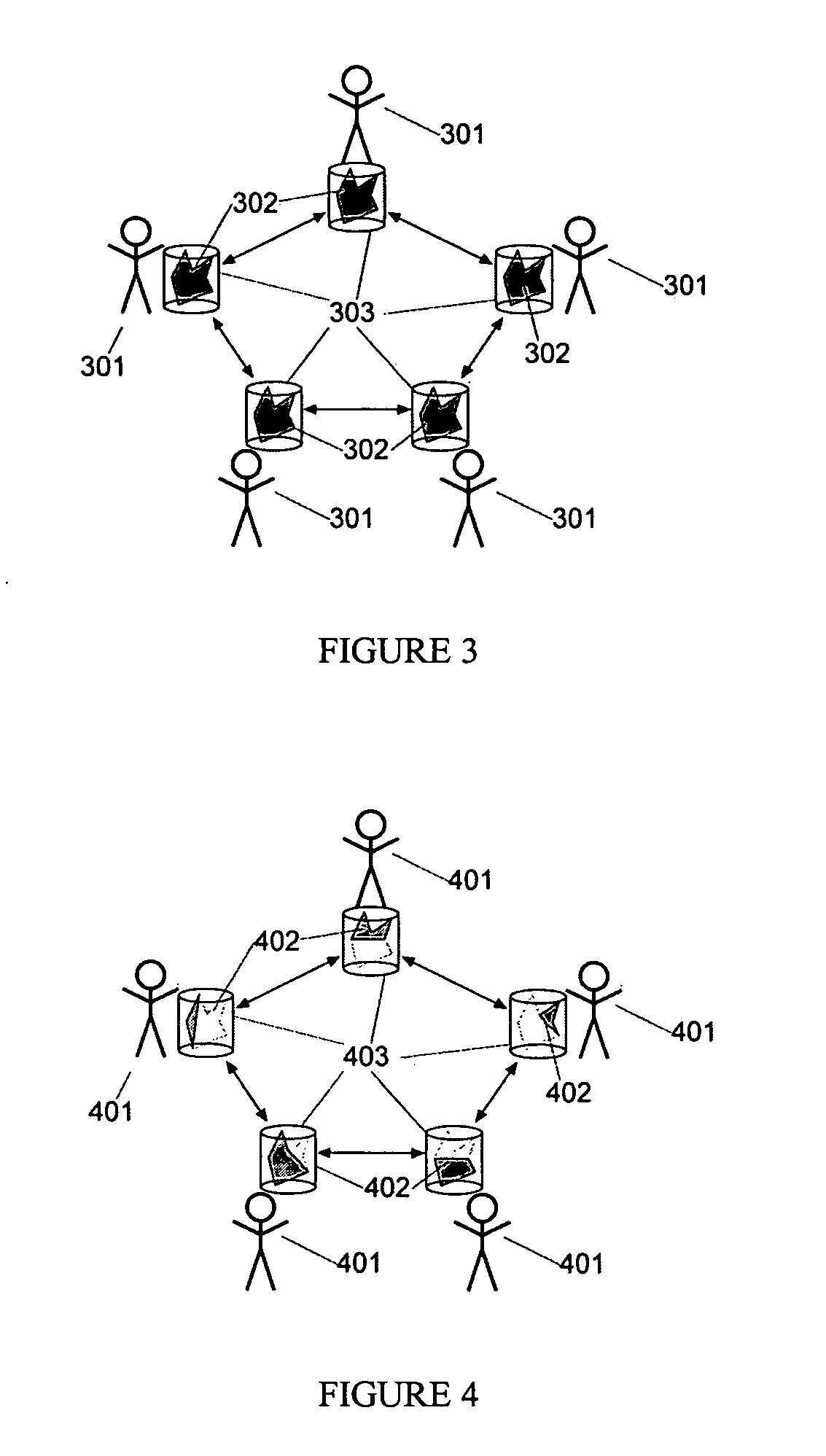System and method for replicating, integrating and synchronizing distributed information
a distributed information and system technology, applied in the field of system and method for replicating, integrating and synchronizing distributed information, can solve the problems of constructing decentralized collaboration software, difficult or impossible to fully centralized architecture, and similar constraints for collaboration,
- Summary
- Abstract
- Description
- Claims
- Application Information
AI Technical Summary
Benefits of technology
Problems solved by technology
Method used
Image
Examples
example
[0103]FIG. 6 shows an example for an information model, using an UML-like graphical syntax, that serves as an example to illustrate the workings of the present invention. However, as it will be apparent to those skilled in the art, any other, simple or complex information model can be used with the present invention. This example is a very simple information model with two EntityTypes: Customer 601 and Order 602. They have PropertyTypes (CustNo 603 and Status 604 for the Customer EntityType and OrderNo 605 and Amount 606 for the Order EntityType), and are related by a RelationshipType called Places 607, expressing the fact that Customers place Orders, that there may be any number of Orders per Customer (Multiplicity 0:N), but that Orders are always placed by exactly one Customer (Multiplicity 1:1).
[0104] The showed EntityTypes and RelationshipTypes could have the following, permanent unique identifiers, assuming that the owner of the example.com domain defined them. As those skille...
PUM
 Login to View More
Login to View More Abstract
Description
Claims
Application Information
 Login to View More
Login to View More - R&D
- Intellectual Property
- Life Sciences
- Materials
- Tech Scout
- Unparalleled Data Quality
- Higher Quality Content
- 60% Fewer Hallucinations
Browse by: Latest US Patents, China's latest patents, Technical Efficacy Thesaurus, Application Domain, Technology Topic, Popular Technical Reports.
© 2025 PatSnap. All rights reserved.Legal|Privacy policy|Modern Slavery Act Transparency Statement|Sitemap|About US| Contact US: help@patsnap.com



